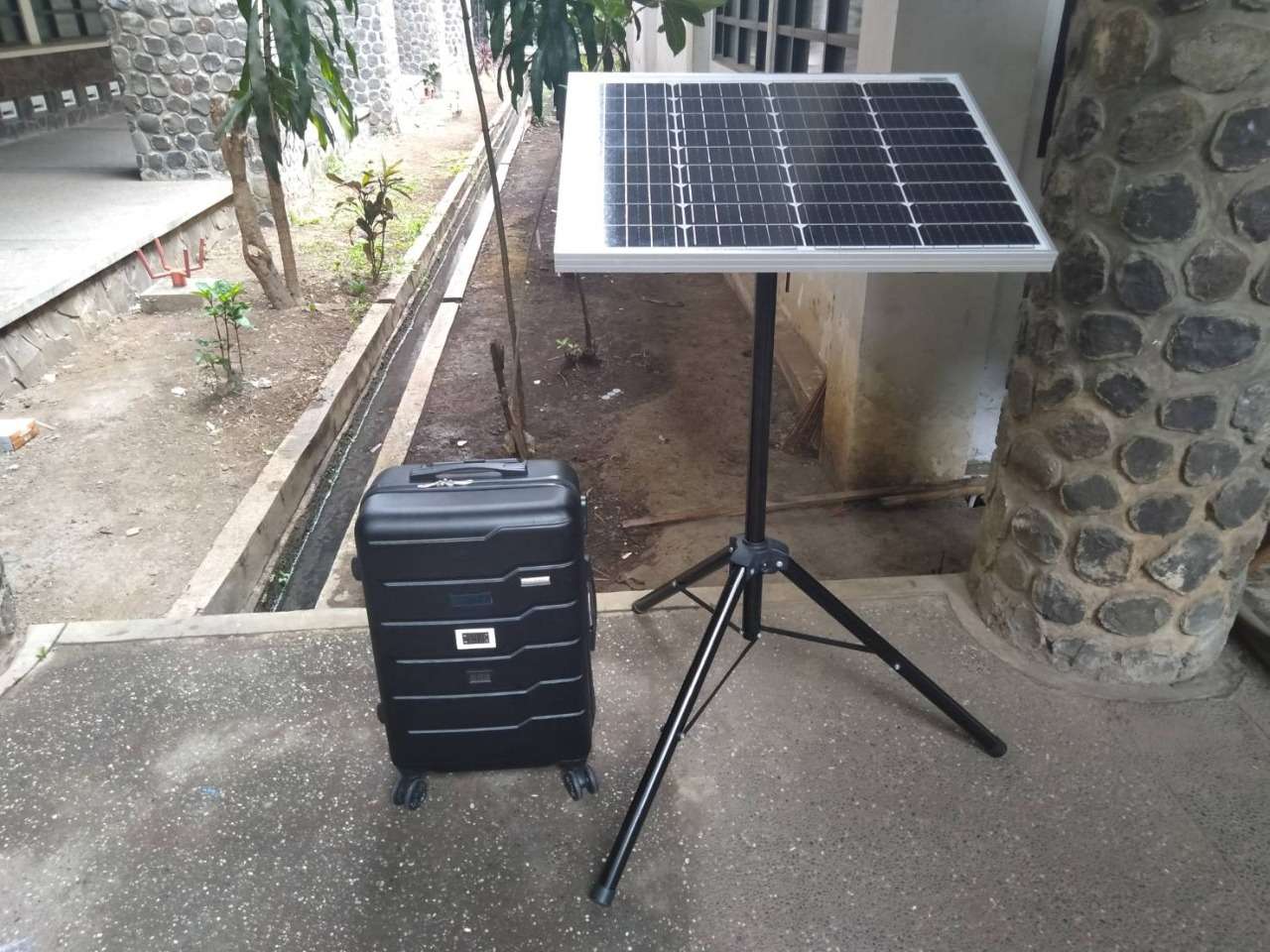Portable Solar Power Plant Made by ITB Team with 80 Watt Power Output Wins Champion
Team SPITS from ITB was able to win first place in the 2021 Marine Paper Competition with portable solar power plant prototype. The competition titled Marine Icone was held by the ITS Faculty of Marine Technology (FTK), starting from the abstract collection stage on September 26, 2021.
A total of 45 teams were declared to have passed the abstract and continued to the full paper selection. The 10 best teams are entitled to advance to the final round. At this stage, team must make a poster and do a presentation in front of judges from the Ministry of Energy and Mineral Resources and ITS lecturers on November 20, 2021. The announcement of the championship will be made on November 21, 2021.
The team from ITB consisted of two Telecommunication Engineering students, namely Muhammad Miqdad Nadra and Dicky Dwi Putra, and Ramadani Putri from Geodesy and Geomatics Engineering. This team made an innovation Solar Power Plant with Internet of Things System (SPITS).
Dicky explained broadly, SPITS has two systems. Off grid photovoltaic and energy management systems. The two systems are integrated with each other. Solar panels will capture the intensity of sunlight and energy, which is obtained will be stored in batteries which can then be used by the community. This tool is capable of producing 80 watts of power.
“The energy management system will help users to know the amount of power, voltage, and current used, as well as the power capacity of the battery,” said Dicky.
The advantages offered by this tool is that it has AC (220 V) and DC (12 V) voltages, so it can be used for various electrical equipment. Has an energy management system, is portable, environmentally friendly, and quiet. The cost of production is Rp. 3,465,000.
Development
This tool was developed in collaboration with various parties, including supervisor Wervyan Shalannanda, S.T., M.T from the Telecommunications Engineering research group, and Dr. Ir. Agus Purwadi, M.T from the Electrical Engineering research group.
Electrical Power Engineering alumni year 2015, namely Abdurrauf Irsal and Muhammad Alif Mi’raj Jabbar, and Adelia Kurniadi (Geological Engineering) were also involved in the construction.
This tool has undergone photovoltaic testing and output voltage, which is generated by AC (224 V) with a frequency of 49.9 Hz. The voltage and frequency values are in accordance with SPLN 1: 1995.
“In general, disasters that often occur are earthquakes and tsunamis, due to Indonesia’s geographical conditions. Based on the case of the earthquake and tsunami in Palu in 2018, several electrical substations were damaged after the disaster. Thus affecting the supply of electrical energy. Repairs also take a long time. Meanwhile, community needs related to electrical energy are a priority,” explained Dicky about the initial idea of making a portable solar power plant.
On the other hand, they assess the potential for renewable energy in Indonesia is quite high, one of which is solar energy which has not yet been optimized. SPITS is not only reliable during a disaster, but can also be applied in 3T areas (frontier, outermost, underdeveloped) where access to electricity is still limited. (ytn)

